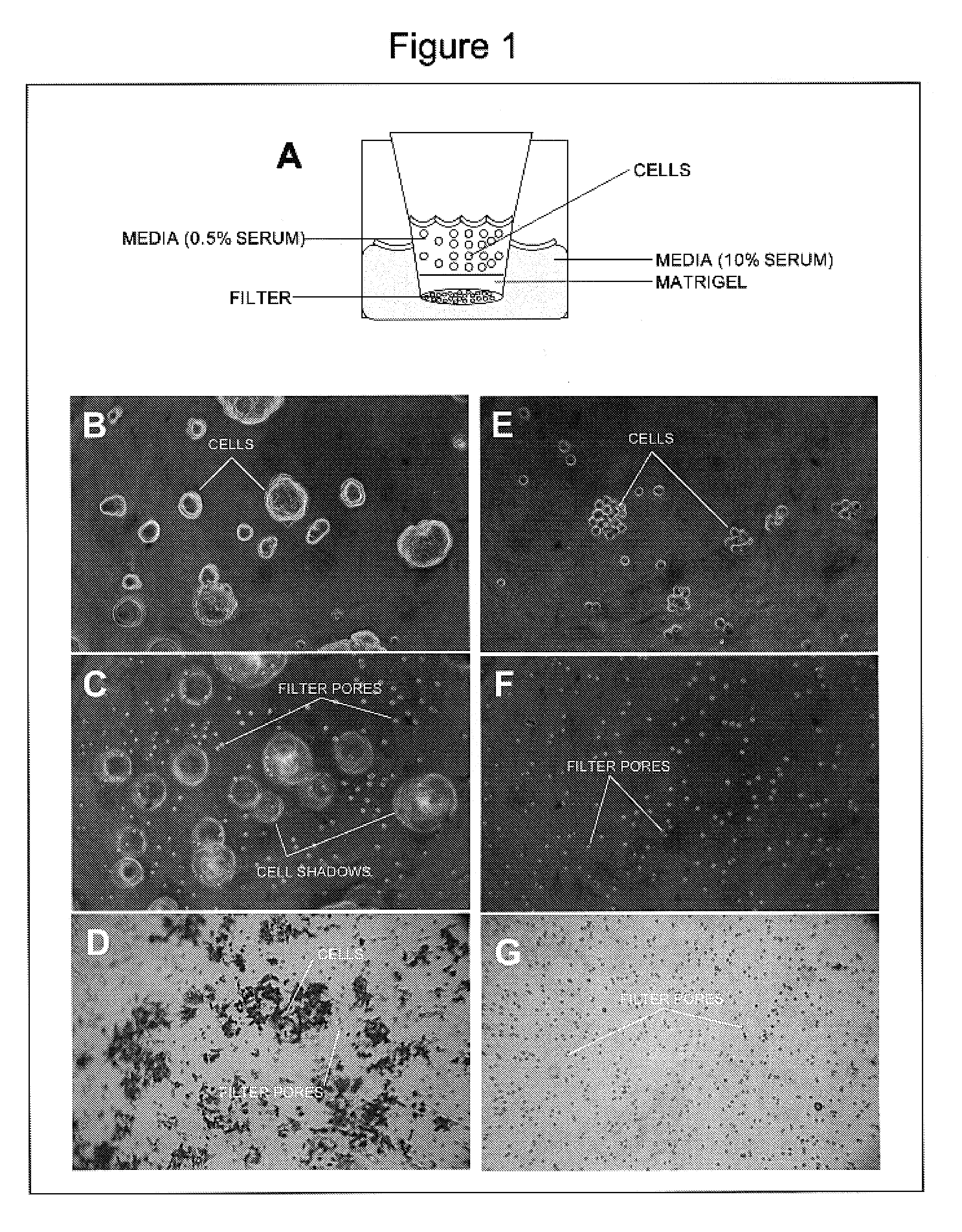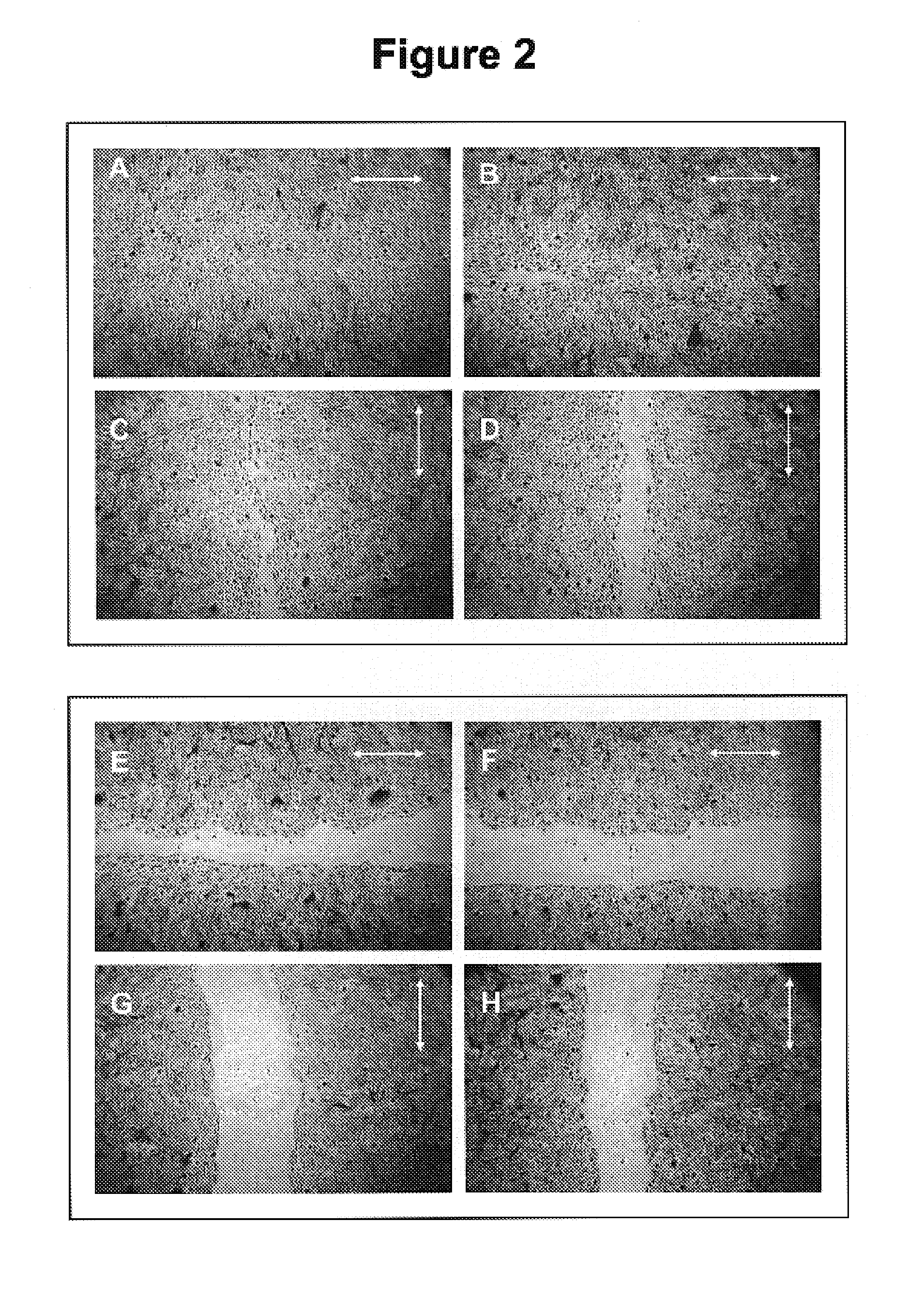Methods for inhibiting cancer and scar formation
- Summary
- Abstract
- Description
- Claims
- Application Information
AI Technical Summary
Benefits of technology
Problems solved by technology
Method used
Image
Examples
example 1
[0087]This example illustrates the anti-cancer properties of oleuropein in the matrigel invasion assay. The endpoint of the matrigel invasion assay is to the determination of the number of cells that invaded and digested the matrigel to reach the filter on the other end of the chamber. Such a quantitation would illustrate the invasiveness of the cancer cells by their ability to digest and invade the extracellular matrix. The decrease in the number of cells found on the filter as a result of the application of oleuropein indicates its anti-cancer properties.
[0088]Utilizing a Boyden chamber shown in the schematic (FIG. 1A), we deposited a top layer of matrigel at 10 mg / ml. Using the most invasive cancer (colon) cell line we seeded the cells on the matrigel top layer with or without oleuropein. The cells were allowed to migrate through the gel for 3 days during which the cell layer and the filter plane were photographed. At the endpoint of the experiment the matrigel layer was removed ...
example 2
[0089]This example illustrates the anti-cancer properties of oleuropein in the cell migration assay. The endpoint of the cell migration assay is the determination of the number of cells that have migrated to close a wound produced in the culture dish. Such a quantitation would illustrate the mobility of cancer cells by their ability to completely close such a wound. The decrease in the number of cells found in the wound area as a result of the application of oleuropein indicates its anti-cancer properties.
[0090]In the classic wound assay, cells are cultured to confluency and then wounded with a sterile wooden stick to form what appears as a road. The cells are then allowed to incubate and migrate across this road to repair the wound in the culture. In this experiment we used renal adenocarcinoma cells. Untreated cells shown in FIGS. (2A), (2B), (2C), (2D) have successfully closed the wound area. In comparison cells treated with 0.01% oleuropein shown in FIGS. (2E), (2F), (2G), and (...
example 3
[0093]Unregulated cell growth is the hallmark of cancer. This example illustrates the anti-cancer properties of oleuropein in the cell growth assay. Cancer cells, representing the most invasive cancers, were seeded in equal numbers on a plate containing varying concentrations of oleuropein. After 5 days cell numbers were assessed using the MTS assay and optical density (490 nm) values are shown on the y-axis of the graph (FIG. 5). The x-axis represents the concentration of oleuropein. These represent true and raw counts made on a microplate reader. In all cancers studied, oleuropein effectively inhibited growth.
PUM
 Login to View More
Login to View More Abstract
Description
Claims
Application Information
 Login to View More
Login to View More - R&D
- Intellectual Property
- Life Sciences
- Materials
- Tech Scout
- Unparalleled Data Quality
- Higher Quality Content
- 60% Fewer Hallucinations
Browse by: Latest US Patents, China's latest patents, Technical Efficacy Thesaurus, Application Domain, Technology Topic, Popular Technical Reports.
© 2025 PatSnap. All rights reserved.Legal|Privacy policy|Modern Slavery Act Transparency Statement|Sitemap|About US| Contact US: help@patsnap.com



